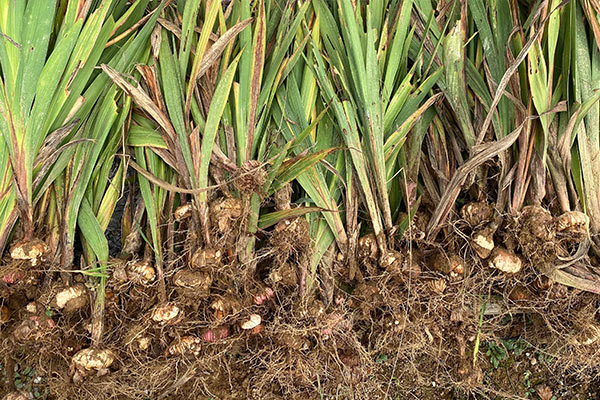November is here and winter is coming. But that doesn’t mean our gardening duties are over. In fact, gardening tasks are endless! Depending on your USDA Hardiness Zone and the flowers your grow, you may have even more chores than other gardeners or flower farmers. Case in point—the fall care of gladiolus.
Gladiolus are winter hardy in Zones 8 and warmer. Glads grown in colder zones will require the lifting of corms—it’s the only way to ensure their survival. Our farm is located in Zone 6b, which means our corms are lifted, dried and stored for the winter. We take pride in growing gladiolus—they’re a staple in our fresh bouquets come blooming season.

As my momma tended her gardens and greenhouse, she always told me, “Anything worth growing takes extra care.” Gladiolus are definitely worth growing, and they require extra care to protect them from harsh winter weather.
I recommend lifting or digging up the corms before the first hard freeze hits your area. However, wait until the foliage has mostly started dying back. I like to leave the corms in the ground as long as possible. Why? Because the foliage will absorb sunlight after flowering and provide the energy and nutrients needed to produce next year’s blooms.
Some years it’s not feasible to wait, particularly when there’s limited growing space in the field or gardens—a situation true on most flower farms.

When digging, be extra careful because the corms may have gotten slightly larger in size or started producing “side babies.” If your soil had been amended prior to planting, the area should be loose enough to just lift the corms out of the ground. We do this by snapping off the dried foliage stalk at ground level and then lifting the corm.

Storing gladiolus corms is just as important as the decision to lift them or dig them up. Make sure the corms are dry and not damp before placing them into storage. Store the corms in a cool, dry space above 40 degrees. We store our corms under the same conditions as our dahlias, elephant ears and other bulbs.

I assure you that when spring comes and you replant the corms, you’ll be glad you took the extra time and care—this is a guarantee from one gardener to another!
Happy Gardening!
Pamela Anthony
Beehind Thyme Farm & Garden

